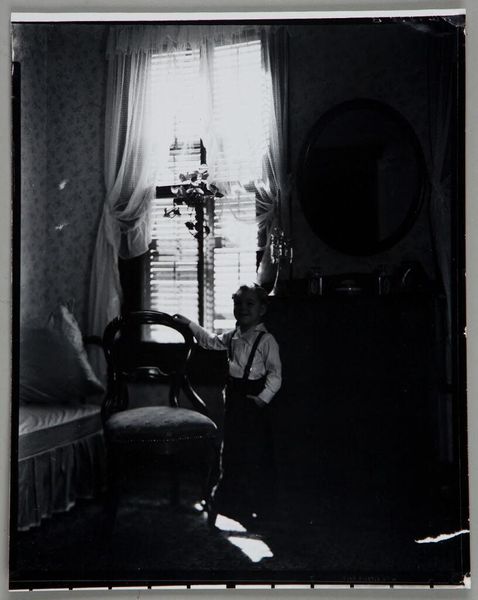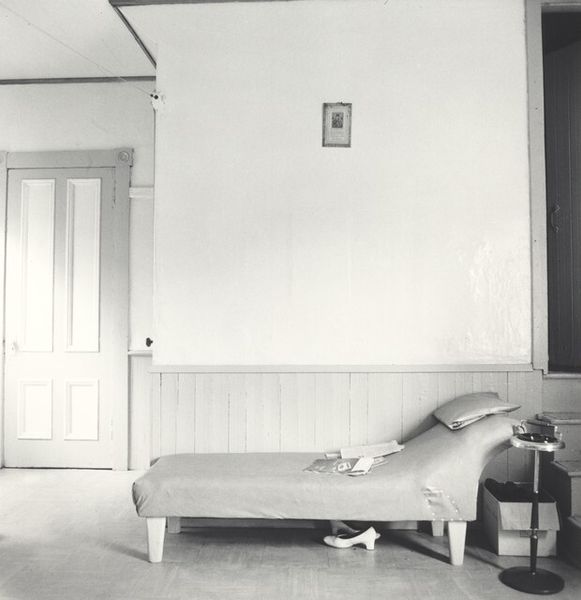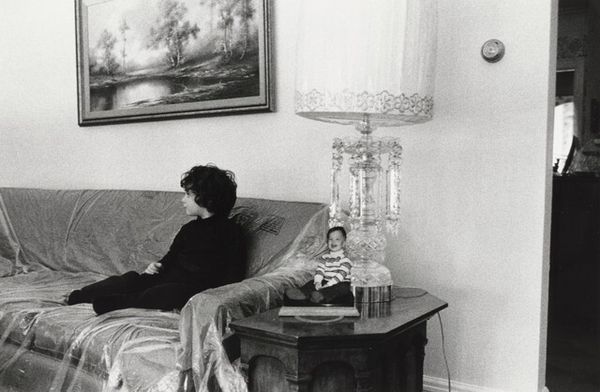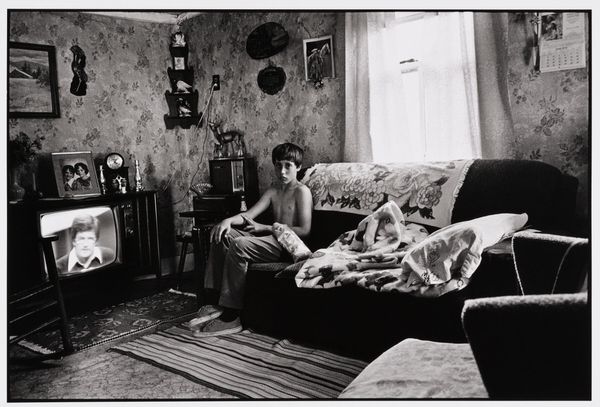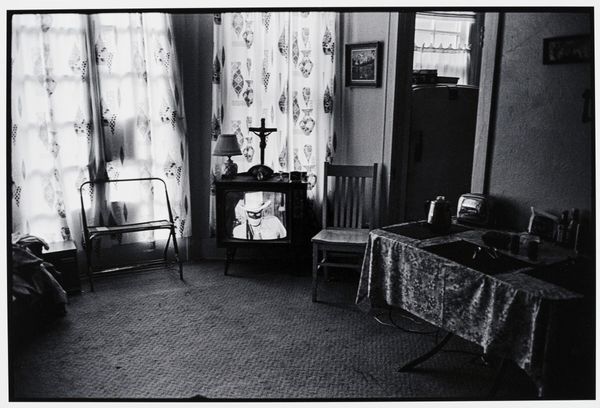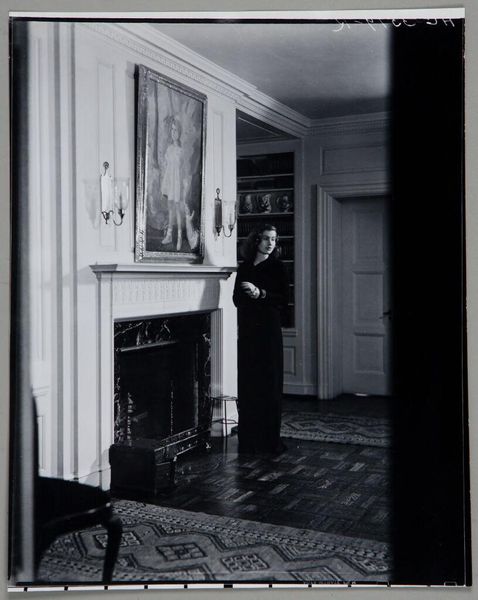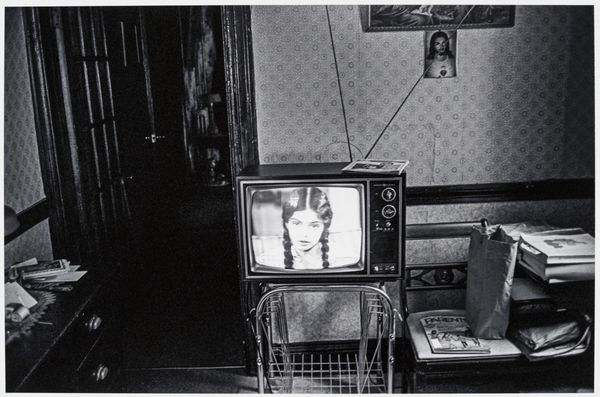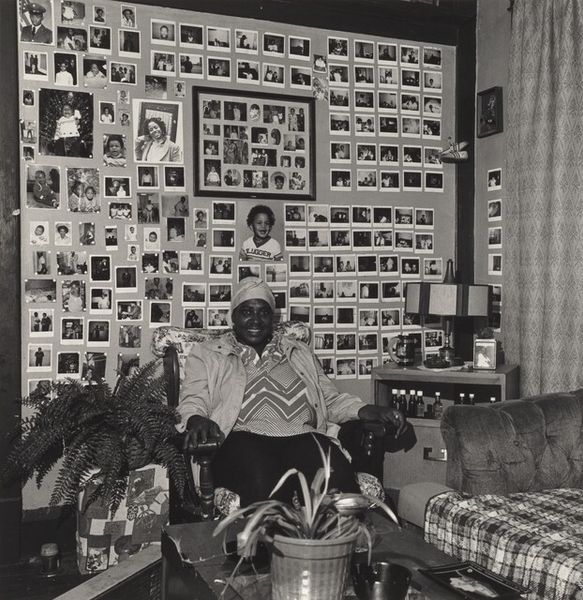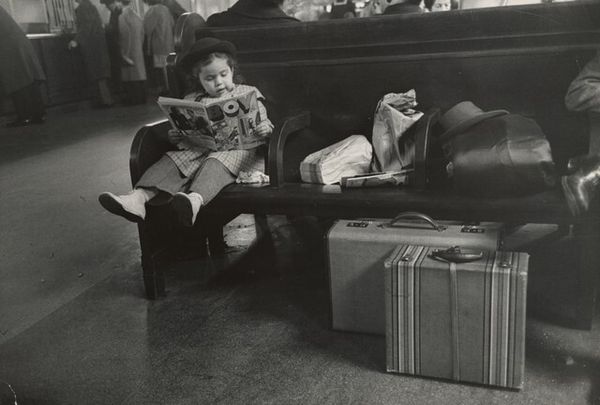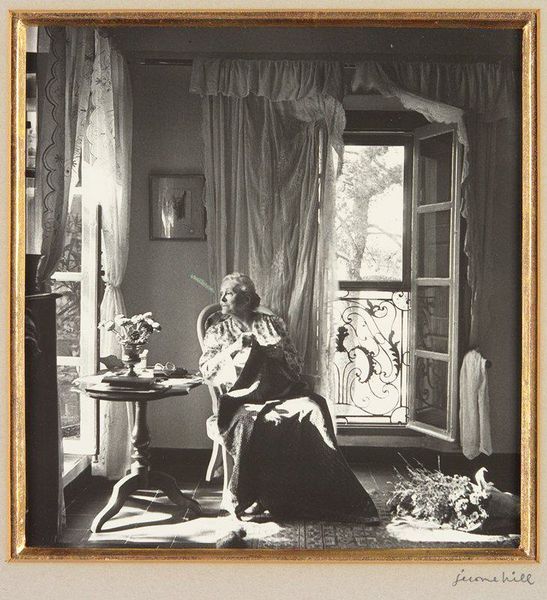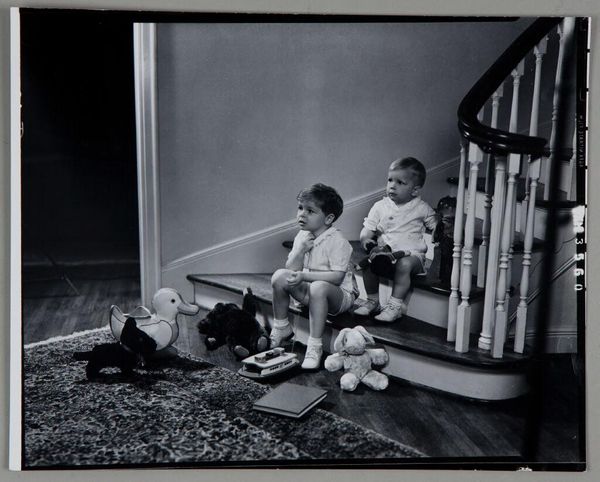
photography, gelatin-silver-print
#
portrait
#
black and white photography
#
black and white format
#
photography
#
black and white
#
gelatin-silver-print
#
monochrome photography
#
monochrome
#
realism
#
monochrome
Dimensions: image: 33.7 x 22.7 cm (13 1/4 x 8 15/16 in.) overall: 35.4 x 27.9 cm (13 15/16 x 11 in.)
Copyright: National Gallery of Art: CC0 1.0
Curator: "Cecil," a gelatin-silver print by Joan Cassis, was created in 1974. Editor: What strikes me first is the stillness of the image, a frozen moment made potent by the high contrast. There’s something unnerving in that quietude. Curator: It's interesting you pick up on that feeling. Cassis's work often deals with themes of domesticity and the subtle power dynamics within familial settings, specifically exploring how societal norms impact children's lives and self-perception. Editor: I see that in the composition itself; the boy, Cecil, is visually bracketed between symbols of tradition and religion: the crucifix and the portrait above, floral drapes and furniture acting as symbolic enclosure. It suggests the weight of expectation. Curator: Precisely. This tension is heightened by the way Cassis uses light and shadow to isolate Cecil within his environment. His direct gaze challenges the viewer. How complicit are we in upholding these norms, or failing to question their effects on children? Editor: There is something almost theatrical about it, as if Cassis has arranged this interior deliberately, framing Cecil as the protagonist within his own home. The details jump out—the two armchairs with just enough separation suggesting a silent expectation. Curator: Cassis also encourages conversations about the representation of youth, especially boyhood, at a time of changing social ideals, she urges us to consider gender and identity. His relaxed, almost defiant posture contradicts some of these prevailing gender constructs of the era. Editor: And that raw emotion comes out due to the composition, the contrast, and, frankly, the simplicity. This approach almost transcends its cultural and historical setting. Curator: Ultimately, Cassis uses the visual language of realism to create something far more evocative, asking pertinent questions about childhood, agency, and belonging. Editor: It has certainly revealed something, stirring and unexpected. I look forward to contemplating the effects of those tensions in relation to my own experience.
Comments
No comments
Be the first to comment and join the conversation on the ultimate creative platform.
